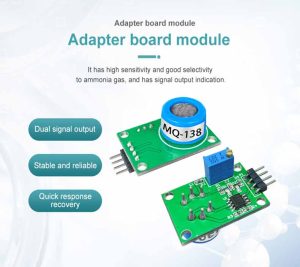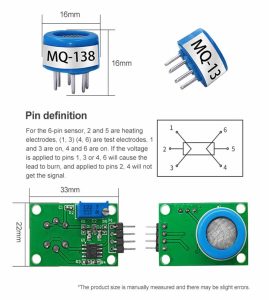Indoor air quality (IAQ) is a critical factor that affects our health, comfort, and productivity. With people spending more time indoors, ensuring clean and healthy indoor air has become a paramount concern. To address this issue, cutting-edge gas sensor innovations are playing a significant role in enhancing IAQ. This article explores the advancements in gas sensor technology and their applications in improving indoor air quality.
The Importance of Indoor Air Quality:
Poor IAQ can lead to several health issues, including respiratory problems, allergies, and even long-term chronic conditions. Indoor spaces can harbor pollutants such as volatile organic compounds (VOCs), carbon dioxide (CO2), particulate matter (PM), and formaldehyde. These pollutants can originate from building materials, furniture, cleaning products, and human activities. Monitoring and maintaining IAQ are essential for creating a healthy and comfortable indoor environment.
Gas Sensor Technology for IAQ Monitoring:
Gas sensor technology offers an effective means of continuously monitoring and analyzing the air quality parameters in indoor spaces. Traditional methods, such as manual sampling, are time-consuming and provide limited data. Gas sensors, on the other hand, enable real-time and accurate measurements of various pollutants. These sensors detect the presence and concentration of specific gases, enabling proactive intervention and control measures for maintaining optimal IAQ.
Multi-Gas Detection Capability:
Cutting-edge gas sensor innovations allow for the detection and measurement of multiple gases simultaneously. Different sensors can be integrated into a single device, providing comprehensive IAQ monitoring. For example, gas sensors can detect VOCs emitted from building materials and furnishings, CO2 levels indicating indoor ventilation efficiency, and particulate matter indicating air cleanliness. This multi-gas detection capability helps identify and address specific sources of indoor air pollution promptly.
Smart Ventilation Systems:
Gas sensors can be integrated with smart ventilation systems to optimize indoor air quality. These systems intelligently monitor IAQ parameters and adjust ventilation rates accordingly. For instance, when CO2 levels rise above a certain threshold, indicating inadequate ventilation, the smart ventilation system increases the fresh air intake. By dynamically adapting ventilation rates based on real-time gas sensor data, energy efficiency is improved while maintaining healthy IAQ.
Air Purification Systems:
Gas sensors facilitate the efficient operation of air purification systems. When gas sensors detect elevated pollutant levels, such as VOCs or PM, they can trigger air purifiers to activate and remove the pollutants from the indoor air. Gas sensors provide valuable feedback to these purification systems, ensuring that they target the specific pollutants present in the environment. This integration of gas sensors with air purification systems enhances their effectiveness in improving IAQ.
Real-Time Monitoring and Alerts:
Gas sensors enable real-time monitoring of IAQ parameters, providing instant feedback on pollutant levels. This real-time monitoring capability allows for immediate response and intervention when air quality deviates from acceptable levels. For example, if gas sensors detect high levels of formaldehyde, indicating potential health risks, alerts can be sent to occupants or building managers to take necessary actions promptly. Real-time monitoring empowers individuals to make informed decisions for their well-being.

IoT Integration:
With the advent of the Internet of Things (IoT), gas sensors can be integrated into smart building systems for centralized IAQ management. IoT platforms collect, analyze, and visualize data from multiple gas sensors deployed throughout a building or facility. This integration provides a holistic view of IAQ and enables proactive control and management measures. Building managers can remotely monitor and control ventilation, air filtration, and humidity systems based on real-time gas sensor data, ensuring optimal IAQ at all times.
Continuous Monitoring in Specific Environments:
Certain environments require continuous monitoring of specific gases due to unique IAQ concerns. For example, hospitals and laboratories need to monitor airborne pathogens, while commercial kitchens need to detect and control cooking-related pollutants. Gas sensor innovations cater to these specific needs by providing sensors designed for specialized gas detection. This ensures targeted monitoring and effective control measures in environments with distinct IAQ requirements.
Integration with Building Automation Systems:
Gas sensors can be seamlessly integrated with building automation systems (BAS) to enhance IAQ management. BAS uses real-time data from gas sensors to automate HVAC system controls, optimize ventilation rates, and regulate temperature and humidity levels. By i
 : +86 155 8830 2704
: +86 155 8830 2704 : jxdziot@gmail.com
: jxdziot@gmail.com
